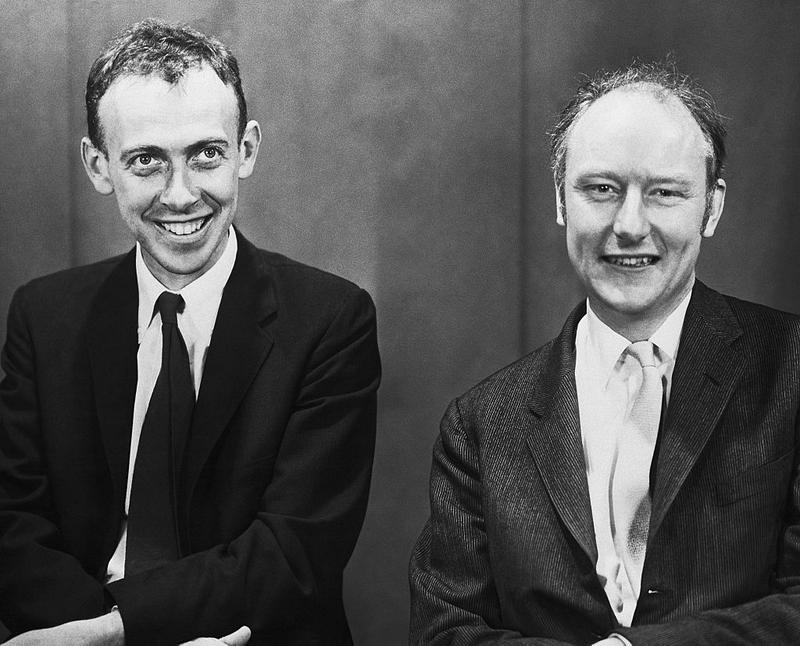Watson and Crick: Scientists Who Discovered DNA Double Helix Structure, Explained
By | February 26, 2021

On February 28, 1953, a couple of scientists from Cambridge University's Cavendish Lab stopped to grab some lunch. As they chewed their food, James Watson and Francis Crick discussed the exciting breakthrough they had made that morning and realized that, based on their research, the structure of D.N.A. was a double helix, the twisting, ladder-like formation we commonly see today.
Watson And Crick Didn't Discover D.N.A.
Watson and Crick are often erroneously credited with the discovery of D.N.A., but that honor goes to a Swiss chemist and biologist named Friedrich Miescher. He identified the acid in 1869, but no one knew what it was for until 1944, when Colin MacLeod, Oswald Avery, and Maclyn McCarty established D.N.A. as the vehicle for carrying the coded genetic information of an organism. Proving their theory required a bit of reverse engineering; typically, a biologist needs to understand the form of a unit before they can unravel its function, but the function of D.N.A. was actually understood before its form.

Who Were Watson and Crick?
At the time of their breakthrough, Watson and Crick were an unlikely duo: a lanky, unkempt 25-year-old bacteriologist from Chicago and a brawny 37-year-old British physicist, respectively. After Watson hopped the pond to study at Cambridge in the early '50s, he partnered up with Crick to analyze the wealth of data about this mysterious D.N.A. business. Eventually, they created hypothetical three-dimensional models of what they believed to be its structure.
But they weren't the only ones interested in the structure of D.N.A. Less than an hour away at London's King's College, New Zealand–born biophysicist Maurice Wilkins and English chemist Rosalind Franklin were studying D.N.A. with X-ray crystallography, a technique pioneered by Franklin that allowed them to clearly observe the helix shape of the structure. Wilkins happened to be a friend of Watson, so he showed him Franklin's X-rays, confirming Watson and Crick's double helix hypothesis.

The Nobel Prize
In April 1953, three articles about the structure of D.N.A. ran back-to-back in the scientific journal Nature. The first was Watson and Crick's, which was purely theoretical in nature; the second article was written by Wilkins with assistance from two of his colleagues; but the third article, written by Franklin and a graduate student named Ray Gosling, was by far the most detailed and comprehensive. It proved Franklin was more knowledgeable than the authors of the other two papers, but they beat her to publication.
They also beat her at the game of life: Tragically, Franklin passed away from ovarian cancer in 1958, four years before Watson, Crick, and Wilkins were presented with the Nobel Prize in Medicine for their contributions to D.N.A. research. As Nobel Prizes cannot be awarded posthumously, Franklin was shut out. It wasn't the only time she missed out on the prize: Prior to her death, she was also studying the molecular structure of viruses with researcher Aaron Klug, who won the Nobel Prize for his work on the subject in 1982.

